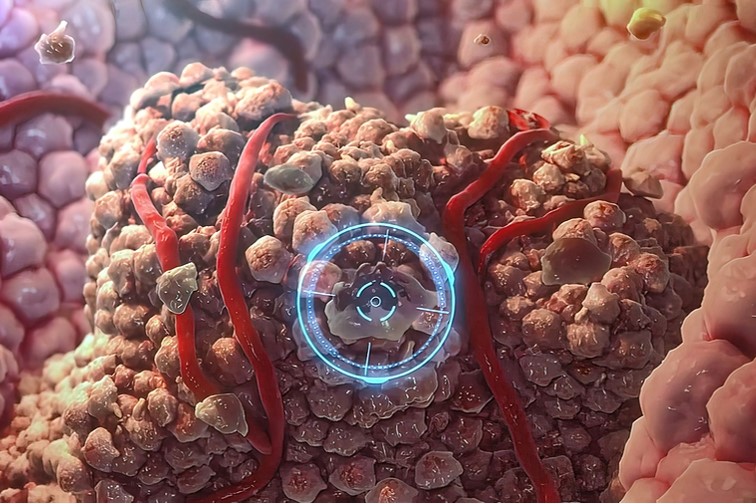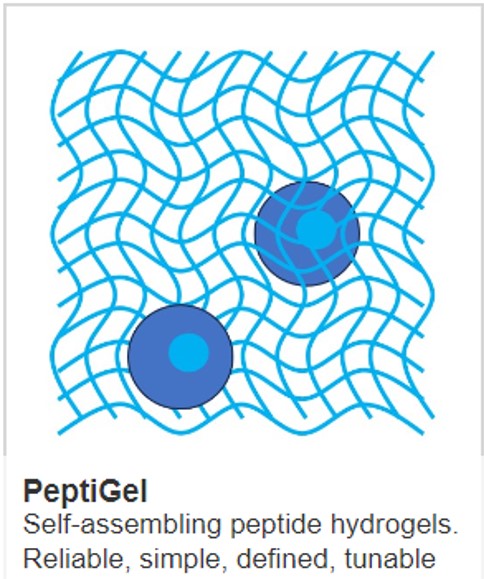Top 10 cytokines and chemokines for immunotherapy of cancer

The efficacy of chemokines and cytokines can vary depending on the type of cancer and the individual patient’s immune response. But some cytokines and chemokines stand out for their promise in cancer immunotherapy based on their roles in modulating the immune response. The following is a brief summary of some of these. They are listed in a rough order of their relative importance.
Top 10 cytokines and chemokines for cancer immunotherapy
- Interleukin-2 (IL-2): IL-2 has been used since 1990 in the treatment of metastatic melanoma and renal cell carcinoma due to its ability to stimulate the growth and activation of T cells and natural killer (NK) cells. IL-2 has significant off-target toxicity which many companies are aiming to address.
- Interleukin-12 (IL-12): IL-12 can promote the differentiation of naive T cells into Th1 cells and enhance the cytotoxic activity of NK cells and T cells.
- Interleukin-15 (IL-15): Similar to IL-2, IL-15 supports the proliferation and activation of NK cells and CD8+ T cells, and it is being explored for its potential in adoptive cell therapy and as a standalone treatment.
- Interleukin-21 (IL-21): IL-21 has been shown to enhance the function of NK cells and CD8+ T cells and may have a role in combination therapies to improve the efficacy of other immunotherapeutic agents.
- Interferon-alpha (IFN-α): IFN-α has antiviral, antiproliferative, and immune-modulating effects and has been used in the treatment of hematologic malignancies and melanoma.
- Interferon-gamma (IFN-γ): IFN-γ is a key cytokine in antitumor immunity, promoting Th1 responses and enhancing the antigen presentation process.
- Granulocyte-macrophage colony-stimulating factor (GM-CSF): GM-CSF can recruit and activate dendritic cells, which are crucial for initiating T-cell responses against tumor antigens.
- C-X-C motif chemokine ligand 10 (CXCL10): CXCL10 is involved in the recruitment of effector T cells to the tumor microenvironment and may have therapeutic potential in enhancing T-cell infiltration into tumors.
- 9 C-C motif chemokine ligand 21 (CCL21): CCL21 has been shown to attract dendritic cells and T cells to the tumor microenvironment, potentially enhancing the antitumor immune response.
- C-X-C motif chemokine ligand 12 (CXCL12): Also known as stromal cell-derived factor 1 (SDF-1), can modulate the tumor microenvironment and has been implicated in tumor progression and metastasis. Targeting the CXCL12/CXCR4 axis is being explored as a therapeutic strategy to inhibit tumor growth and metastasis.
It is important to note that while these cytokines and chemokines show promise, their use in cancer immunotherapy must be carefully managed due to the potential for adverse effects, such as cytokine release syndrome. Additionally, the efficacy of these molecules can be influenced by the tumor microenvironment and the presence of other immune cells and factors.
Whilst potent, chemokines and cytokines can also generate severe off-target effects, exemplified by IL-2 which has receptors on e.g., endothelial cells which are permeabilized following IL-2 binding leading to vascular leakage and oedema. IL-2 has complex receptor binding behaviours which further complicate its activity.
To reduce off-target effects, drug delivery systems which modulate the distribution and binding profile of cytokines and chemokines are being developed. We and other groups are using commercially available PODS cytokines and chemokines. These can either be intratumorally or intravenously injected and delivered to the tumour by phagocytic immune cells.
Additional cytokines and chemokines cancer immunotherapy candidates
Furthermore, the following cytokines and chemokines are also being explored for their potential roles in cancer immunotherapy, although they did not make the top 10 list above:
- Interleukin-10 (IL-10): While typically considered an anti-inflammatory cytokine, IL-10 has complex roles in the tumor microenvironment and is being studied for its potential to modulate immune responses in cancer.
- Interleukin-7 (IL-7): IL-7 is critical for T cell development and survival and is being investigated for its ability to enhance T cell responses in cancer patients.
- C-C motif chemokine ligand 5 (CCL5): Also known as RANTES, CCL5 is involved in the recruitment of T cells and other immune cells to the tumor site and may play a role in antitumor immunity.
- C-X-C motif chemokine ligand 9 (CXCL9): Similar to CXCL10, CXCL9 is involved in the recruitment of T cells to the tumor microenvironment and may contribute to the antitumor immune response by promoting the infiltration of effector T cells.
- Transforming growth factor-beta (TGF-β): Although TGF-β is often associated with immunosuppression and tumor progression, there is interest in targeting the TGF-β signaling pathway to enhance the efficacy of immunotherapies and to reverse immune evasion by tumors.
- Interleukin-17 (IL-17): The role of IL-17 in cancer is complex, with both pro-tumorigenic and antitumorigenic effects reported. Therapeutic strategies are being developed to modulate IL-17’s activity in the tumor microenvironment.
- Interleukin-6 (IL-6): IL-6 can have both pro-inflammatory and anti-inflammatory effects and is a key cytokine in the acute phase response. Targeting IL-6 signalling is being explored for its potential to modulate the immune response in cancer.
- C-C motif chemokine ligand 2 (CCL2): CCL2 is involved in the recruitment of monocytes to sites of inflammation and has been implicated in the recruitment of myeloid-derived suppressor cells (MDSCs) to the tumor microenvironment, which can promote tumor growth and metastasis. Inhibiting CCL2 signaling is being investigated as a strategy to reduce tumor-associated immunosuppression and enhance antitumor immunity.
- C-C motif chemokine ligand 22 (CCL22): CCL22 attracts regulatory T cells (Tregs) to the tumor site, which can suppress the immune response against the tumor. Therapies targeting CCL22 or its receptor may help to reduce Treg-mediated immunosuppression and improve the effectiveness of other immunotherapies.
- Interleukin-18 (IL-18): IL-18 can enhance the activity of NK cells and promote the differentiation of T cells into Th1 cells. Its role in cancer immunotherapy is being explored, particularly in combination with other cytokines such as IL-12.
- Interleukin-23 (IL-23): IL-23 is involved in the maintenance of Th17 cells and has been associated with chronic inflammation and cancer. Therapeutic approaches may aim to block IL-23 to reduce inflammation and tumorigenesis.
- Interleukin-33 (IL-33): As an alarmin released upon cell damage, IL-33 can activate immune cells and has been implicated in cancer-related inflammation and immune surveillance. Its role in cancer immunotherapy is under investigation.
- C-X-C motif chemokine ligand 16 (CXCL16): CXCL16 functions as both a chemokine and an adhesion molecule and is involved in the recruitment of CXCR6-expressing cells, such as activated T cells, to the tumor microenvironment. Targeting the CXCL16-CXCR6 axis is being explored for therapeutic potential.
- C-X3-C motif chemokine ligand 1 (CX3CL1): Also known as fractalkine, CX3CL1 is unique in that it acts as both a chemokine and an adhesion molecule. It is involved in the recruitment and retention of CX3CR1-expressing immune cells, such as cytotoxic T cells and NK cells, within the tumor microenvironment. Therapeutic strategies may focus on enhancing CX3CL1-mediated immune cell infiltration to boost antitumor immunity.
- Interleukin-8 (IL-8): IL-8 is a pro-inflammatory chemokine that can attract neutrophils and other immune cells to sites of inflammation, including tumors. While it can promote angiogenesis and tumor growth, there is also interest in targeting IL-8 to modulate the immune response and inhibit tumor progression.
- Interleukin-9 (IL-9): Produced by Th9 cells, IL-9 has been shown to have both tumor-promoting and tumor-inhibiting effects, depending on the context. Its role in cancer immunotherapy is still being elucidated, with some studies suggesting it could enhance antitumor immune responses.
- Interleukin-22 (IL-22): IL-22 plays a role in tissue repair and inflammation. Its involvement in cancer is complex, as it may contribute to both tumor growth and the immune response against tumors. Research is ongoing to determine how IL-22 signaling can be modulated to benefit cancer patients.
- Interleukin-27 (IL-27): IL-27 has both pro- and anti-inflammatory properties and can induce antitumor immune responses. It is being studied for its potential to enhance the efficacy of cancer vaccines and other immunotherapies.
These additional cytokines and chemokines represent a broader landscape of potential immunomodulatory agents that could be harnessed for cancer treatment. The challenge lies in understanding their complex interactions within the tumor microenvironment and developing strategies to leverage their activities for therapeutic benefit while minimizing potential adverse effects. This requires a deep understanding of the immune context of different tumor types and the systemic effects of cytokine and chemokine modulation.
The exploration of these cytokines and chemokines in cancer immunotherapy is part of a broader effort to harness the immune system for the treatment of cancer. The goal is to develop therapies that can effectively stimulate the immune system to recognize and destroy cancer cells while sparing normal tissues. This requires a delicate balance, as the immune system’s regulatory mechanisms must be modulated without triggering excessive inflammation or autoimmunity.
IMAGE: Targeting cancer Credit: BigStock



